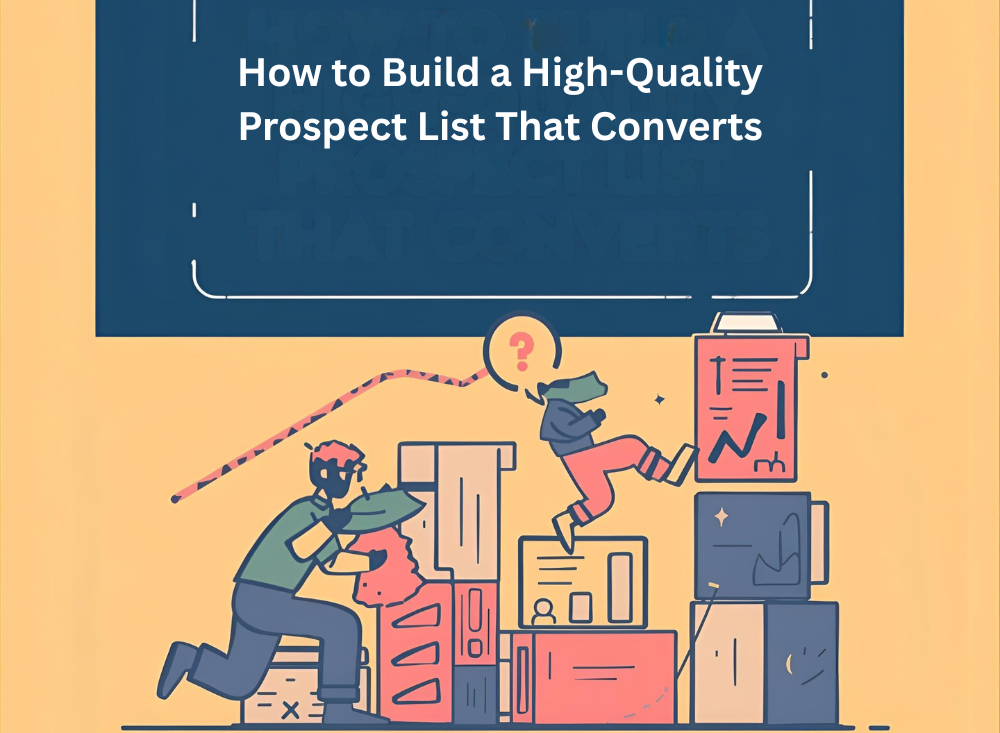
In B2B sales, client acquisition and prospecting are two sides of the same coin, each playing a critical role in building a robust pipeline and driving revenue. While prospecting focuses on identifying and engaging potential clients, acquisition is about converting those prospects into paying customers. Blending these processes strategically creates a seamless, efficient approach that maximizes results. This article explores how to integrate client acquisition and prospecting, building on strategies from our previous articles: Account-Based Prospecting for B2B Success, Using Social Media for Smarter Prospecting, AI Email Assistants for Faster and Smarter Prospecting, How to Automate Follow-Ups Without Losing Personalization, and How to Nurture Cold Prospects Into Hot Leads.
Why Blend Client Acquisition and Prospecting?
Prospecting lays the groundwork by identifying and nurturing leads, while acquisition focuses on closing deals. Integrating these processes ensures a cohesive strategy where every prospecting effort feeds directly into acquisition, reducing inefficiencies and accelerating conversions. By aligning research, outreach, nurturing, and closing tactics, you create a streamlined funnel that turns cold prospects into loyal clients.
Step 1: Align Prospecting with Acquisition Goals
Start by defining your acquisition goals, such as targeting specific industries or deal sizes. Then, align your prospecting efforts to feed these goals. Use the ideal customer profile (ICP) from our ABP article to identify high-value accounts that match your acquisition targets. For example, if your goal is to acquire enterprise clients in healthcare, focus prospecting on large hospitals or clinics with complex operational needs.
Segment prospects into tiers (e.g., Tier 1 for high-priority accounts), as discussed in our ABP and nurturing articles, to prioritize outreach and ensure resources focus on accounts with the highest conversion potential.
Step 2: Research for Both Engagement and Conversion
Deep research is critical for both prospecting and acquisition. As outlined in our ABP and social media articles, research company milestones, industry trends, and stakeholder priorities to inform outreach. For acquisition, go further by understanding decision-making processes, budget cycles, and potential objections. For example, if a prospect’s company is expanding, prospecting might highlight scalability solutions, while acquisition efforts emphasize ROI and implementation timelines.
Use social media insights, as discussed in our social media article, to identify stakeholder pain points (e.g., a CFO’s focus on cost savings) and tailor both prospecting and closing conversations accordingly.
Step 3: Create a Unified Outreach Strategy
Blend prospecting and acquisition by designing outreach that transitions seamlessly from initial engagement to closing. Use the personalized, value-driven approach from our email and social media articles for prospecting, then shift to acquisition-focused messaging as prospects engage. For example:
- Prospecting Email: “Hi [Name], I noticed [Company] is tackling [specific challenge]. We’ve helped similar firms improve [specific outcome]. What’s your team’s top priority here?”
- Acquisition Email: “Hi [Name], following our discussion on [specific challenge], here’s how we’ve delivered [specific result, e.g., 20% cost reduction] for [similar company]. Can we explore how this fits your budget in a 15-minute call?”
This unified approach ensures prospecting builds trust, while acquisition conversations address specific needs and objections, as covered in our follow-up and nurturing articles.
Step 4: Nurture with Conversion in Mind
Nurturing cold prospects, as discussed in our nurturing article, is a bridge between prospecting and acquisition. Use multi-touch sequences (e.g., email, social media, calls) to warm prospects, but include acquisition-oriented elements like case studies or ROI-focused insights. For example:
- Nurturing Touchpoint: Share a case study: “We helped [similar company] achieve [specific result].”
- Acquisition Touchpoint: Propose a demo: “Based on your interest in [specific challenge], would you like a tailored demo to see how we can deliver [specific result] for [Company]?”
This gradual shift keeps prospects engaged while moving them toward a buying decision.
Step 5: Leverage Multi-Channel Synergy
Integrate email, social media, and phone outreach, as highlighted in our social media, email, and follow-up articles, to create a cohesive journey from prospecting to acquisition. For example:
- Engage on social media by commenting on a prospect’s post, as per our social media article.
- Follow up with a personalized email referencing that interaction, as per our email article.
- Use a phone call to propose a meeting, addressing objections with acquisition-focused insights, as per our follow-up article.
This multi-channel approach reinforces your message and builds familiarity, making prospects more receptive to acquisition conversations.
Step 6: Address Objections Across the Funnel
Objections arise during both prospecting and acquisition. Anticipate these, as discussed in our ABP, email, and nurturing articles, and address them proactively. For example:
- Prospecting Stage: “Many clients initially worry about [specific concern, e.g., implementation time]. We’ve found [specific benefit] makes it seamless.”
- Acquisition Stage: “I understand budget is a priority. Our clients typically see [specific ROI] within [timeframe]. Can we discuss how this aligns with your goals?”
Include clear, low-pressure CTAs, like “Are you free for a 10-minute call to explore this?” to keep momentum.
Step 7: Collaborate Across Teams
Acquisition and prospecting benefit from sales and marketing alignment, as emphasized in our ABP and email articles. Marketing can support prospecting with account-specific content (e.g., whitepapers) and acquisition with tailored proposals or demos. Regular syncs ensure consistent messaging, so prospecting efforts feed seamlessly into acquisition strategies.
Step 8: Measure and Optimize the Entire Funnel
Track metrics across both processes to identify what drives conversions. Monitor prospecting metrics like response rates and engagement, and acquisition metrics like meeting bookings and close rates. For example, if emails highlighting cost savings lead to more meetings with CFOs, emphasize that angle in both stages. Continuous optimization, as recommended in our email, follow-up, and nurturing articles, ensures the blended approach stays effective.
Example Blended Outreach Sequence
- Day 1 (Prospecting): Email: “Hi [Name], I saw [Company] recently [specific milestone]. We’ve helped similar firms tackle [specific challenge]. What’s your team’s focus for [relevant area]?”
- Day 5 (Nurturing): Social Media: Comment on their post: “Great insights on [topic]! We’ve seen [specific solution] help with that.”
- Day 10 (Nurturing): Email: “Following up, here’s how we helped [similar company] achieve [specific result].”
- Day 15 (Acquisition): Email: “Based on [Company’s goal], I’d love to show you how we can deliver [specific result]. Are you free for a 15-minute demo next week?”
This sequence blends prospecting, nurturing, and acquisition seamlessly.
Key Tips for Success
- Align Goals: Ensure prospecting targets feed directly into acquisition priorities.
- Stay Personalized: Tailor every touchpoint to the prospect’s needs and context.
- Integrate Channels: Use email, social media, and calls for a cohesive experience.
- Focus on Value: Offer insights and solutions at every stage to build trust.
Conclusion
Blending client acquisition and prospecting creates a powerful B2B sales strategy that turns cold prospects into loyal clients efficiently. By aligning research, outreach, nurturing, and closing efforts, you can build a seamless funnel that drives results. For more on supporting strategies, explore our articles: Account-Based Prospecting for B2B Success, Using Social Media for Smarter Prospecting, AI Email Assistants for Faster and Smarter Prospecting, How to Automate Follow-Ups Without Losing Personalization, and How to Nurture Cold Prospects Into Hot Leads. With a unified approach, you can transform your B2B sales process and achieve sustainable growth.








